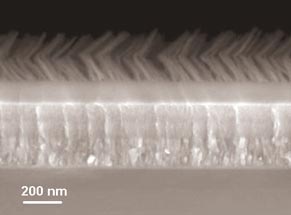 Let’s face it, solar panel breakthroughs are a dime a dozen. Every day or two some university or company is declaring a more efficient solar panel, usually, though by a small percentage. Rensselaer Polytechnic Institute researchers have changed all that.
Let’s face it, solar panel breakthroughs are a dime a dozen. Every day or two some university or company is declaring a more efficient solar panel, usually, though by a small percentage. Rensselaer Polytechnic Institute researchers have changed all that.
Professor Shawn-Yu Lin and a group of fellow scientists have developed a special solar panel coating, based on nanoscience, which absorbs 96.21-percent of the light shone upon it. This light not only includes visible sunlight, but the ultraviolet and infrared parts of the spectrum as well.
Typical solar panels absorb around 67.4-percent of the sunlight shone upon them, so the solar panel breakthrough from Rensselaer offers around 30-percent increased efficiency. What is special about the Rensselaer solar coating is that it involves laying down seven layers of material around 50 nm to 100 nm each.
The material is made up of titanium dioxide and silicon dioxide “nanorods” positioned at oblique angles. Each layer traps light that is trying to be reflected back from the layer below.
Some large scale solar utilities use tracking devices so that their solar panels follow the sun as the day passes, requiring added energy and maintenance. With the Rensselaer solar coating this kind of tracking won’t be necessary since light at any angle is trapped inside the photovoltaic cell.
The Rensselaer solar breakthrough will bring the photovoltaic industry one step closer to being cost competitive with coal fired power plants. And, this step is more like a leap in clean, green renewable field.